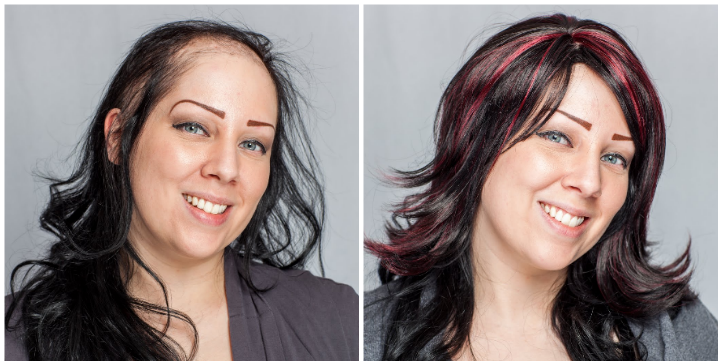
Also known as “Hair pulling syndrome” or
“Pathological Hair pulling” is characterized by irresistible urge to pull out
one’s hair and the extent of the urge is so extreme that after pulling out hair
commonly from the head and eyebrows the person has a brief moment of relief and
satisfaction. Royal Hairnic has been assisting patients to deal with
trichotillomania in a very cost-effective and result-oriented manner.
SIGNS/SYMPTOMS:
1. Urge to pull out hair while experiencing
stressful situations.
2. Sense of relief after pulling out hair from
head or eyebrows most commonly but including beard, legs.
3. Attempts to prevent pulling hair resulting in
stress and anxiety.
4. Behaviours such as obsessing over hair root,
counting hair, chewing or swallowing hair which might result in abdominal
pain, vomiting, etc.
5. Indulging in hair pulling for hours in a day.
CAUSES:
The exact causes cannot be
concluded but the following have been the most common causes among the people
having Trichotillomania.
1. Situations causing anxiety or depression may
lead to hair pulling as after the episode of hair pulling a sense of
relief follows and which then turns into a vicious cycle.
2. One more common cause noticed is
Obsessive-compulsive disorder which is a chemical imbalance in the brain.
3. The risk of developing trichotillomania from
family is high even though the majority don’t end up inheriting it.
4. Some studies by researchers have suggested
that structural and functional abnormalities in the brain, as frontal
lobes that are responsible for inhibiting such habits may not function
properly resulting in developing habit disorder.
DIAGNOSIS:
1. Diagnosing Trichotillomania is challenging as
individuals may not be open to discuss regarding the urge to pull out hair
due to embarrassment.
2. Individuals may try to hide the hair loss
using hair wigs or fake eyelashes making diagnosis difficult.
3. In cases where the person is unwilling to
discuss or consult regarding such behaviour, a different diagnosis may be
prescribed such as evaluation for alopecia aerate, hypothyroidism, tinea
capitis, iron deficiency, and thallium poisoning.
4. As a person may not be open, consulting a
psychologist or a psychiatrist may be an option to evaluate any signs of
Obsessive-compulsive disorder leading to pulling hair.
5. Every treatment at Royal Hairnic will be
safely prescribed under professional supervision so that the best
treatment can be prescribed to you not just to treat the symptoms but also
the underlying problem.
TREATMENT:
1. The most successful psychotherapy treatment in
treating Trichotillomania is Habit Reversal Training (HRT). The individual
is trained to first identify the situations or environment triggering the
urge to pull hair and then to redirect this urge to something not harmful
and productive.
2. Medication may be prescribed to supplement the
treatment. Anti-depressants prescribed by doctors might help to control
extreme urges while slowly learning how to redirect the urge to pull hair.
3. Behavioural therapy to modify the behaviour
pattern in such individuals can help treat Trichotillomania.
4. We understand the treatment might be stressful
and at Royal Hairnic, we provide support to you, so that the whole process
becomes a lot easier and comfortable.
OTHER FACTORS TO CONSIDER:
1. Stress management can be quite helpful as it
is the most common cause.
2. Infection and permanent skin damage are most
likely to occur in such cases if not treated at an early stage.
3. Getting proper help at the right will help a
lot in dealing with Trichotillomania. We at Royal Hairnic
are completely focused on providing the best medical care possible. Our
trustworthy staff will be with you all along making your experience with
us worthwhile.
For more information or to book an appointment
please contact us on
